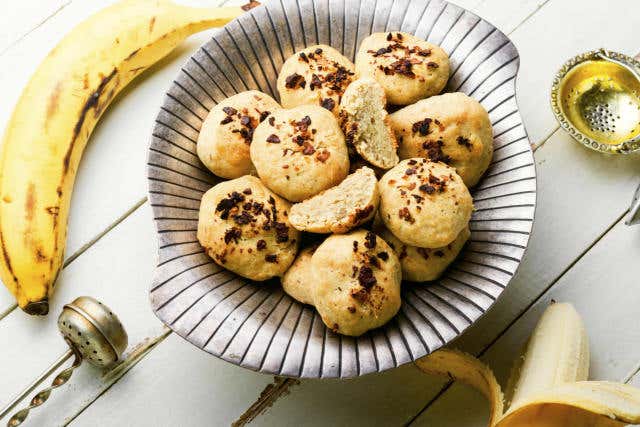Banana peels make sugar cookies better for you
Banana peels aren’t always destined for the trash or compost anymore. They’re making their way onto people’s plates.

[Aug 13, 2022: ACS Newsroom, American Chemical Society]
Banana peels aren’t always destined for the trash or compost anymore. They’re making their way onto people’s plates, replacing pork in “pulled peel” sandwiches and getting fried up into “bacon.” (CREDIT: Creative Commons)
Banana peels aren’t always destined for the trash or compost anymore. They’re making their way onto people’s plates, replacing pork in “pulled peel” sandwiches and getting fried up into “bacon.” And now, researchers reporting in ACS Food Science & Technology show that incorporating banana peel flour into sugar cookie batter makes the treats more healthful.
In taste tests, cookies enriched with some banana peel flour were more satisfying than those baked with wheat flour alone.
Interest in plant-based diets and reducing food waste is increasing, and people want creative ways to use every part of their vegetables and fruits. Banana peels are one such waste that chefs and home cooks have been experimenting with, but these skins are extremely fibrous, making them unpleasant to eat raw.
Recently, scientists found that they can grind the peels into a flour that’s rich in fiber, magnesium, potassium and antioxidant compounds. And when small amounts of wheat flour in breads and cakes were replaced with the new flour, the baked goods were more nutritious and had acceptable flavors.
Related Stories
However, similar experiments haven’t been widely done with cookies. So, Faizan Ahmad and colleagues wanted to substitute some of the wheat flour in sugar cookies with banana peel flour, assessing the cookies’ nutritional quality, shelf-stability and consumer acceptance.
To make banana peel flour, the researchers peeled ripe, undamaged bananas and then blanched, dried and ground the skins into a fine powder. They mixed together different amounts of the powder with butter, skimmed milk powder, powdered sugar, vegetable oil and wheat flour, creating five batches of sugar cookies, and baked them.
Increasing the amount of the banana peel flour from 0 to 15% in the batches produced browner and harder products, which could be a result of the increased fiber content from the peels.
This study aimed to evaluate the effect of incorporation of banana peel flour (BPF) on the nutritional and antioxidant properties of cookies prepared with wheat flour. Cookies were prepared by substituting 7.5, 10, 12.5, and 15% of superfine wheat flour with BPF and compared to control samples (with no BPF). (CREDIT: ACS Publications)
In addition, cookies with banana peel flour were more healthful, having less fat and protein, higher amounts of phenols and better antioxidant activities than the conventional ones.
A trained panel determined that cookies with the smallest substitution of banana peel flour (7.5%) had the best texture and highest overall acceptability compared to the other batches. This batch also kept well for three months at room temperature — it tasted the same as the wheat-only versions after the lengthy storage period.
Christmas sugar cookies made from banana peels. (CREDIT: Creative Commons)
Because cookies can be enriched with some banana peel flour without impacting their consumer acceptance, the researchers say this addition could make these baked goods more nutritious.
The authors acknowledge funding from the Department of Post-Harvest Engineering and Technology, Faculty of Agricultural Sciences, Aligarh Muslim University.
Note: Materials provided above by American Chemical Society. Content may be edited for style and length.
Like these kind of feel good stories? Get the Brighter Side of News' newsletter.
Joseph Shavit
Head Science News Writer | Communicating Innovation & Discovery
Based in Los Angeles, Joseph Shavit is an accomplished science journalist, head science news writer and co-founder at The Brighter Side of News, where he translates cutting-edge discoveries into compelling stories for a broad audience. With a strong background spanning science, business, product management, media leadership, and entrepreneurship, Joseph brings a unique perspective to science communication. His expertise allows him to uncover the intersection of technological advancements and market potential, shedding light on how groundbreaking research evolves into transformative products and industries.



